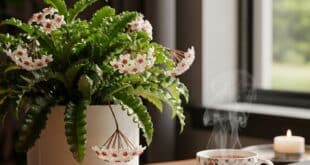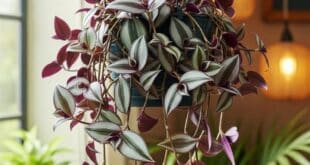Meet The Hoya Plant
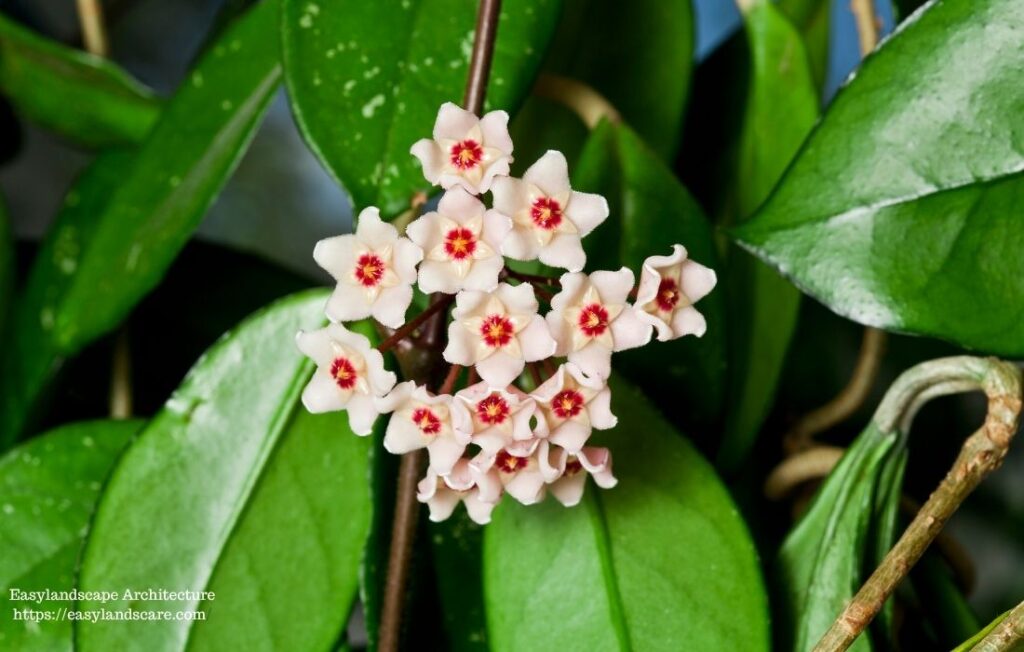
Hoya (known commonly as wax plants because of their thick flesty leaves and sometimes waxy star flower) are a large and multiform group of the Apocynaceae (milk) family houseplants. Originally from tropical and subtropical areas in Asia, Australia or the Pacific Islands hamm, Hoya can be adored for their lovely foliage and interesting, some with a nice fragrance flowers in clusters (umbels), and fairly easy to take houseplants. There is a Hoya for all types of leaf form, size, texture and flower colour from which every plant geek will find their succulent. Read on to find out more about these mesmerizing climbers and trailers and tips to help them survive indoors.
Defining the Hoya Plant: Waxy Wonders and Sweet Blooms
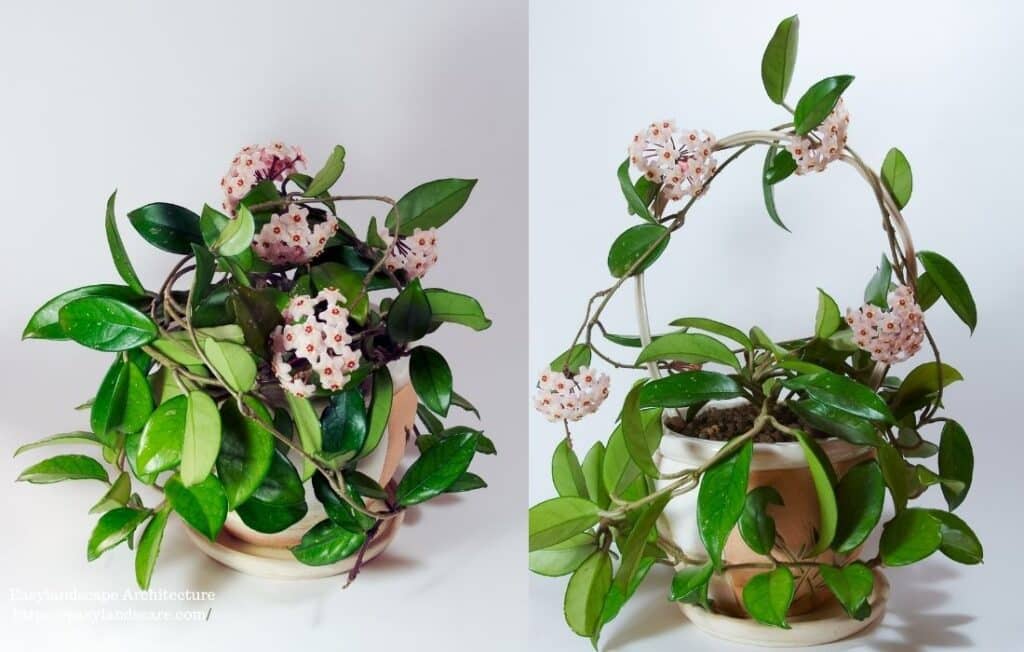
Key features of Hoya plants are their usually thick and succulent leaves, which can be linear to the more heart shaped and able, to smooth and fuzzy. The leaves too are capable of lovely variegation, being spotted white, cream pink and silver. But the catch, it’s the flowers. Typically appearing in umbels — a group of florets that are often star-shaped and can be quite elaborate in their detailing, ranging from white to pink, red and yellow — up to even near-black Hoya flowers. Many Hoya flowers are heavily scented as well looqin sweet smelly in the evening, or sometimes spicy.
Origins of Hoya Plants: Tropical Treasures from Around the Globe
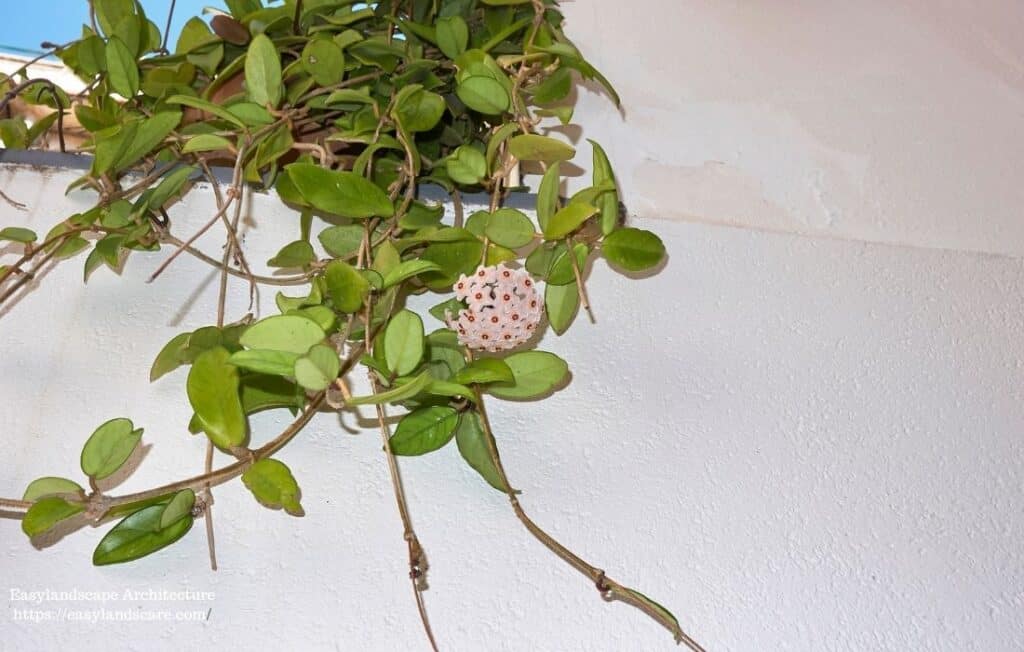
The vast genus Hoya encompasses hundreds of species, each adapted to its specific tropical or subtropical environment across Asia (including India, China, Thailand, and Indonesia), Australia, and the Pacific Islands. They are often found growing as epiphytes (on trees), lithophytes (on rocks), or sometimes as terrestrial vines in their native habitats. This diverse origin contributes to the wide variety of forms and adaptations found within the Hoya genus.
Different Names for Hoya Plants and Their Significance
The most common alternative name for Hoya plants is “wax plant,” a direct reference to the waxy texture of both their leaves and flowers. Some species might have more specific common names related to their appearance or scent, but “Hoya” and “wax plant” are widely understood. The scientific name honors Thomas Hoy, an English gardener who worked for the Duke of Northumberland in the late 18th century.
What are the Different Types of Hoya Plants?
The world of Hoyas is incredibly diverse, offering a wide array of choices for indoor gardeners:
Popular Hoya Plants Species
- Hoya carnosa: A favorite Hoya of many and widely adaptable — with ovate waxy leaves, masses of sweet-smelling fat pink or cream star shaped flowers surrounded by a dark red centre A number of cultivars exist w/ various leaf variegation.
- Hoya pubicalyx: Known for its beautiful, often splashy or speckled leaves and clusters of fuzzy, dark red to almost black flowers. It’s a vigorous grower and relatively easy to bloom.
- Hoya kerrii: Heart leaf Hoya (sold often as single hearts in a small pot) Large mature plants will produce clusters of small small white flowers or pink-white.
- Hoya obovata: Features rounded, obovate leaves that can sometimes have silver speckles and clusters of fragrant, pink and white flowers.
- Hoya linearis: A more unusual Hoya with long, slender, almost needle-like leaves and delicate, fuzzy white flowers. It has a more trailing appearance.
- Hoya lacunosa: Famous for its deeply incised leaves and clusters of tiny flowers – white or cream, but frequently flowering.
Leaf Variations of the Hoya Plants: Shapes, Sizes, and Textures
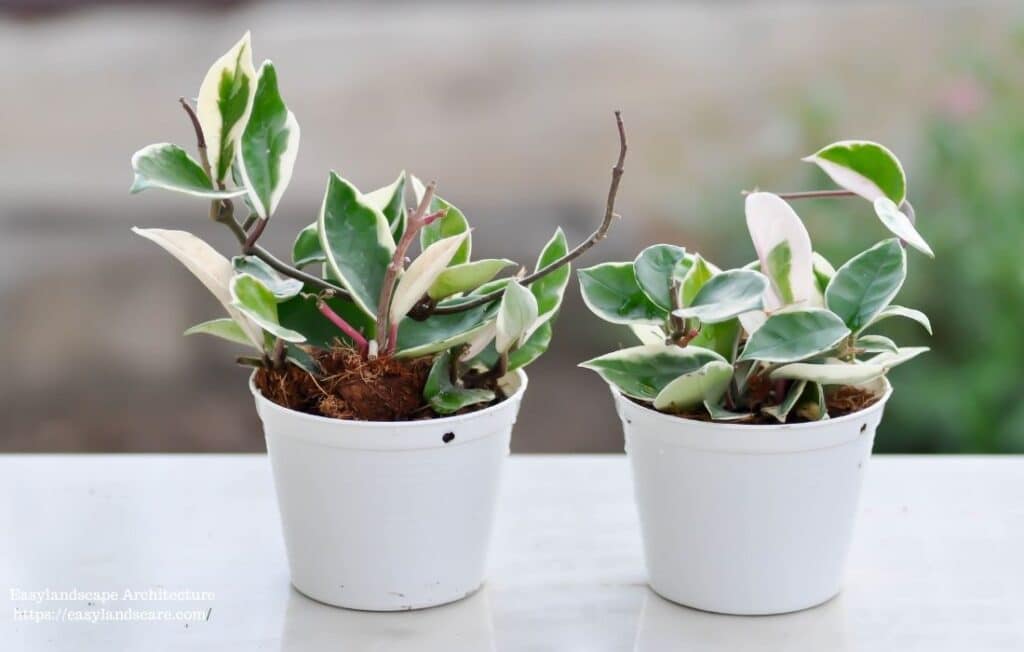
Hoyas exhibit an amazing variety in their foliage. Leaves can be small and delicate like Hoya linearis, or large and fleshy like some varieties of Hoya carnosa. Shapes range from the iconic heart of Hoya kerrii to the elongated leaves of Hoya lanceolata. Textures can be smooth and glossy, matte, or even fuzzy like Hoya serpens. This diversity in foliage makes Hoyas appealing even when they are not in bloom.
Flower Colors and Fragrances of the Hoya Plant: A Sensory Delight
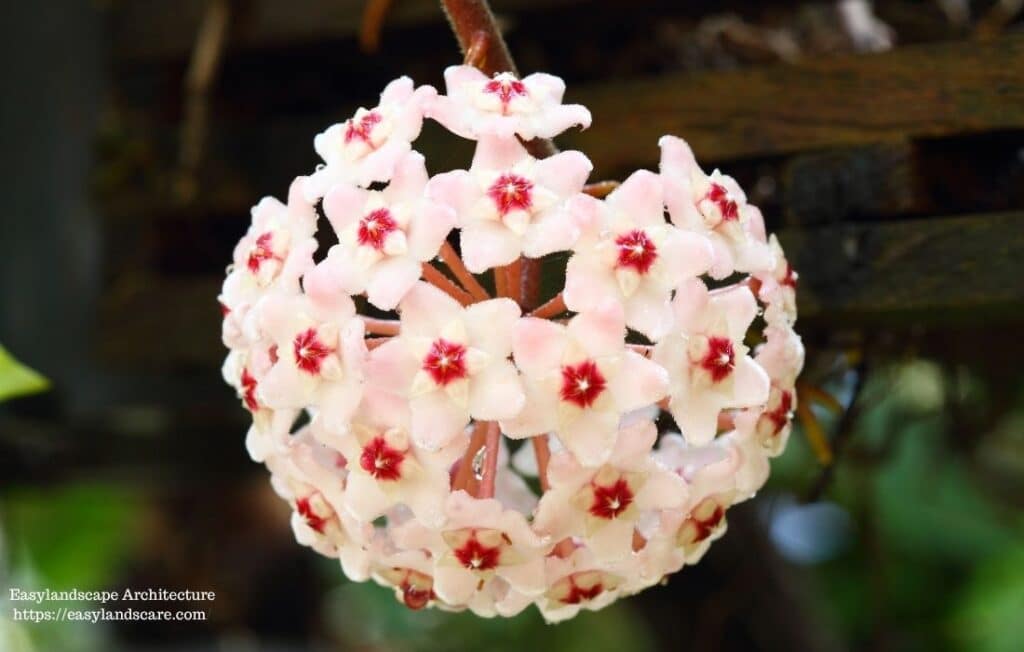
Hoya flowers are a true spectacle. They often appear in spherical clusters (umbels) and showcase a range of colors from pure white and soft pink to vibrant reds, sunny yellows, and even deep, almost black hues. The intricate, star-shaped blooms often have a contrasting corona (the central part of the flower). Many Hoya flowers are also fragrant, with scents ranging from sweet like honey or vanilla to spicy or even chocolatey, often strongest in the evening or at night to attract their natural pollinators.
How to Care for a Hoya Plant?
While the variety within the Hoya genus means specific care can vary, there are some general guidelines to keep your wax plant happy:
Ideal Light Levels: Bright, Indirect Light for Best Growth and Blooming
Hoyas are usually happy in bright, indirect light. East or west windows are often perfect. Although some Hoyas can do well in lower light levels, low light can also result in thin, leggy growth and no flowers. Keep them away from any direct long-term harsh sunlight as this can burn their leaves.
Watering Needs: Allow Soil to Dry Between Waterings
Hoyas are semi-succulents and like their soil to be on the dry side between waterings. Root rot = one of the most frequent mistakes I see people make with too much water. When the soil feels dry in an inch or so of top growth, water thoroughly and let it drain completely. On the other hand, decrease watering during the mild winter months.
Temperature and Humidity: Warmth and Moderate Humidity are Appreciated
Hoyas in general like warm conditions of 60-85°F (15-29°C). Moderate to high humidity is what these tropical plants enjoy it in their native home. They do fine in normal household humidity, but adding more humidity, especially during dry times is recommended for optimum healthy growth and flowering. Use a humidifier, mist them occasionally or you can group them together to increase the humidity a little around the plant.
Soil and Pot Selection: Well-Draining Mix is Crucial
Hoyas do not like to sit in wet soil for long and therefore a well-draining potting mix is necessary to help prevent root rot. A soil mix of orchid bark, perlite coco coir and perhaps a little potting soil can be used. Heavy soils retain moisture choose pots with drainage holes. Hoyas in general are not heavy repotting plants and usually do not bloom well when over-potted. Repot only when the plant has outgrown it’s pot fairly significantly.
Encouraging Hoya Blooms: The Sweet Reward of Hoya Plant Care
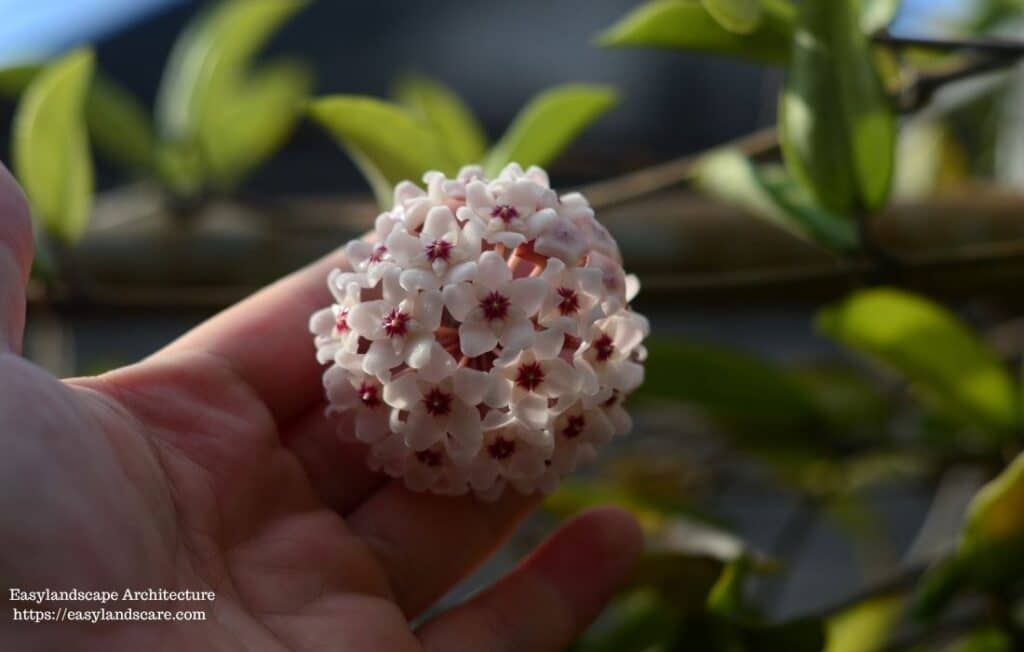
Getting your Hoya to flower its beautiful and often fragrant blooms is a rewarding experience. Here are some tips to encourage flowering:
Provide Adequate Bright, Indirect Light
Sufficient light is crucial for flower production. Ensure your Hoya is receiving enough bright, indirect light.
Allow the Plant to Mature
Some Hoyas, especially younger plants, may take a few years to mature enough to bloom. Be patient!
Avoid Moving the Plant Once Buds Formed
Hoyas can be sensitive to being moved, especially when they have developing flower buds. Changes in light or environment can cause the buds to drop.
Don’t Remove the Peduncles (Flower Spurs)
Hoyas usually bloom on the same peduncles year after year. Do not remove a peduncle that has flowers on it.
Maintain a Consistent Watering Schedule of the Hoya Plant
While allowing the soil to dry out between waterings is important, extreme fluctuations in moisture can stress the plant and hinder blooming.
Consider a Balanced Fertilizer During the Growing Season
Light feeding with a balanced liquid fertilizer during the spring and summer can provide the necessary nutrients for growth and flowering. Avoid high-nitrogen fertilizers, which can promote foliage growth at the expense of blooms.
Common Issues with Hoya Plants: Identification and Solutions
While generally resilient, Hoyas can sometimes encounter a few common problems:
Leaf Drop: Often a Sign of Stress
Sudden leaf drop can be caused by various factors, including overwatering, underwatering, sudden temperature changes, drafts, or low humidity. Evaluate your care routine and environment to identify the stressor.
Lack of Blooms: Insufficient Light or Immaturity are Common Causes
Ensure your Hoya is receiving enough bright, indirect light and that it is mature enough to bloom.
Yellowing Leaves: Often Due to Overwatering
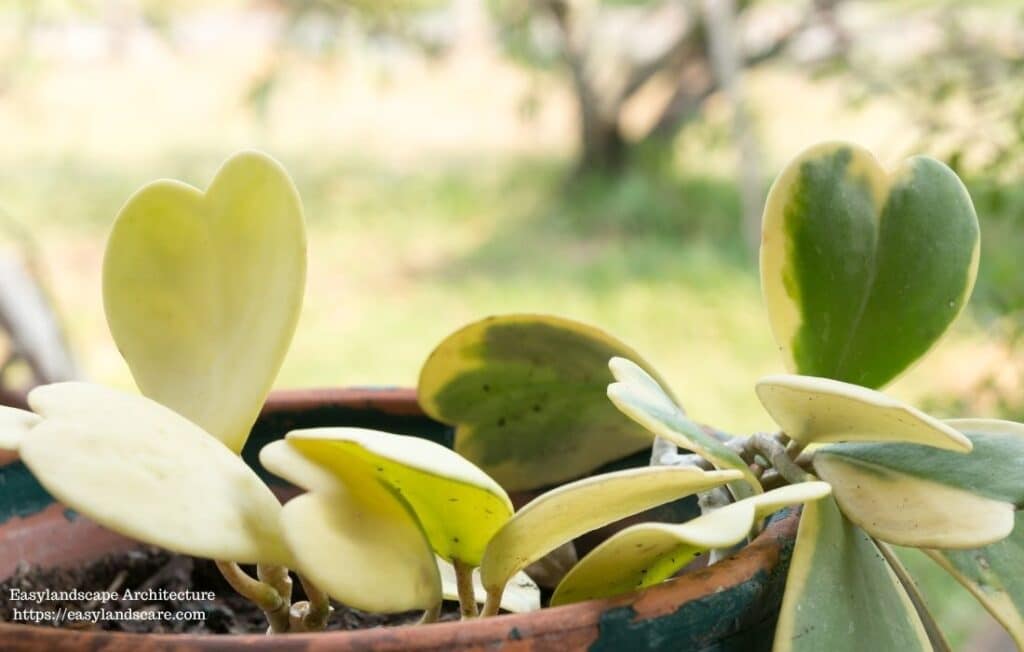
Overwatering is a common cause of yellowing leaves in Hoyas. Allow the soil to dry out more between waterings.
Leggy Growth: Indicates Insufficient Light
If your Hoya is producing long, bare stems with few leaves, it needs more light.
Pests: Watch Out for Mealybugs, Aphids, and Scale
Common houseplant pests can sometimes infest Hoyas. Regularly inspect your plant and treat any infestations promptly with insecticidal soap, neem oil, or by manually removing the pests.
Root Rot: The Danger of Overwatering
Overwatering can lead to root rot, a serious condition that can kill your Hoya. Ensure your pot has drainage holes and use a well-draining potting mix.
Is the Hoya Plant Toxic? Safety for Pets
Most Hoya species are supposedly non-toxic to cats and dogs (according to the ASPCA — American Society for the Prevention of Cruelty to Animals) This is a somewhat safer plant for homes that are pet friendly. Nonetheless, it should be avoided when pets chew on houseplants since some species may still lead to mild stomach upset in a sensitive animal.
Hoya Plant for Home Decor: Versatility and Beauty
Hoyas offer a wide range of aesthetic possibilities for home decor:
Perfect for Hanging Baskets and Trellises: Showcasing Trailing and Climbing Habits
Trailing Hoyas look stunning in hanging baskets, allowing their beautiful foliage and flower clusters to cascade. Climbing varieties can be trained up trellises or moss poles, creating vertical interest.
Adding Texture and Interest to Shelves and Windowsills: Diverse Foliage
Even when not in bloom, the diverse leaf shapes, sizes, and variegation of Hoyas add texture and visual interest to shelves, windowsills, and plant stands.
Hoya Plant Unique Flowers as Natural Art
The intricate and often colorful flower clusters of Hoyas serve as natural works of art, adding a touch of the exotic and beauty to any room.
The Allure of Hoya Plants: A Rewarding and Diverse Genus
Hoya plants offer a captivating combination of beautiful foliage, unique and often fragrant flowers, and relatively easy care. With the vast diversity within the genus, there’s a Hoya to suit every taste and growing environment. Whether you’re drawn to their waxy leaves, their star-shaped blooms, or their sweet scents, cultivating Hoyas can be a truly rewarding and enchanting experience, bringing a touch of tropical beauty and fragrance into your home.
In conclusion, Hoyas are not just plants; they are living art pieces that provide both visual and olfactory delight. With the right care, they can thrive and become a long-lasting part of your indoor garden. Would you like to discover another plant with wonderful flowers? Then you should definitely read our Coleus Plant Care Secrets: How to Keep Your Foliage Bright and Bold article.
Our article “Top 10 Hoya Plant Varieties: An Illustrated Guide for Beginners” will also keep you interested.



